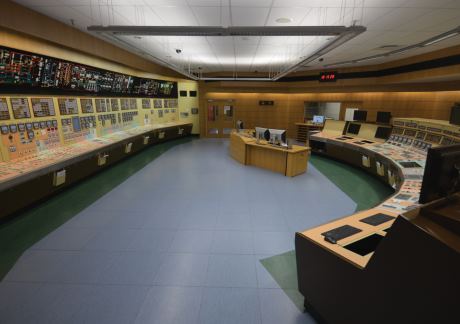Two simulators for South Africa
17 September 2013
South Africa's Koeberg nuclear power plant can now boast two state-of-the-art operator training simulators with the commissioning of a second facility. Major refurbishment work has also been completed on Koeberg's first simulator.
 |
| Koeberg's second simulator (Image: J Lagerwald/L-3 MAPPS) |
The work has been carried out by Canada-based L-3 MAPPS, following on from contracts signed in 2009. Koeberg's legacy simulator was refurbished in two phases. The first included installation of L-3's Orchid simulation platform, remodelling of the balance of plant process loop, simulation of new steam turbine controllers and was completed in time to allow operators to be pre-trained for changes to the plant itself in late 2010. This was followed by a second phase, which saw all the remaining plant models upgraded.
The second full-scope simulator, which entered service on 1 August, replicates the plant's main control room and emergency control facility driven by a compact modular input-output system.
Simulators are a vital piece of equipment for training plant operators, both at the start of their careers and for their continuing training. Koeberg operator training manager Christo Lombard said that plant operator Eskom was pleased with both the L-3 MAPPS technology and the collaboration between the two companies, working together to make sure the new simulators were ready concurrently with a new training centre at the site. "The two projects in themselves were challenging, but it became clear that combining them would be beneficial to our overall project scheme," he said.
Michael Chatlani, vice president of marketing & sales for L-3 MAPPS Power Systems and Simulation, said the company was "extremely pleased" with its performance on the Koeberg project and looked forward to working to support Eskom "for years to come."
Koeberg, operated by Eskom, is the only nuclear power station on the African continent. Its two pressurized water reactors have been in operation since the mid-1980s and provide 5% of South Africa's electricity. Faced with burgeoning energy demand, government plans foresee at least 9600 MWe of new nuclear capacity by 2030, although financial constraints saw Eskom pull back from plans to build a new nuclear plant in 2008. However South African commitment to new nuclear energy at some point remains firm: earlier this year Vice President Kgalema Motlanthe spoke of South Africa's needs to develop a comprehensive nuclear program in a keynote speech to the Nuclear Africa 2013 conference.
Researched and written
by World Nuclear News